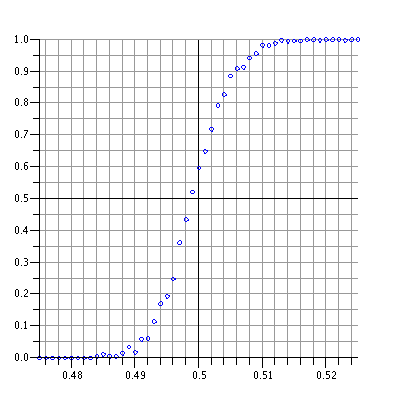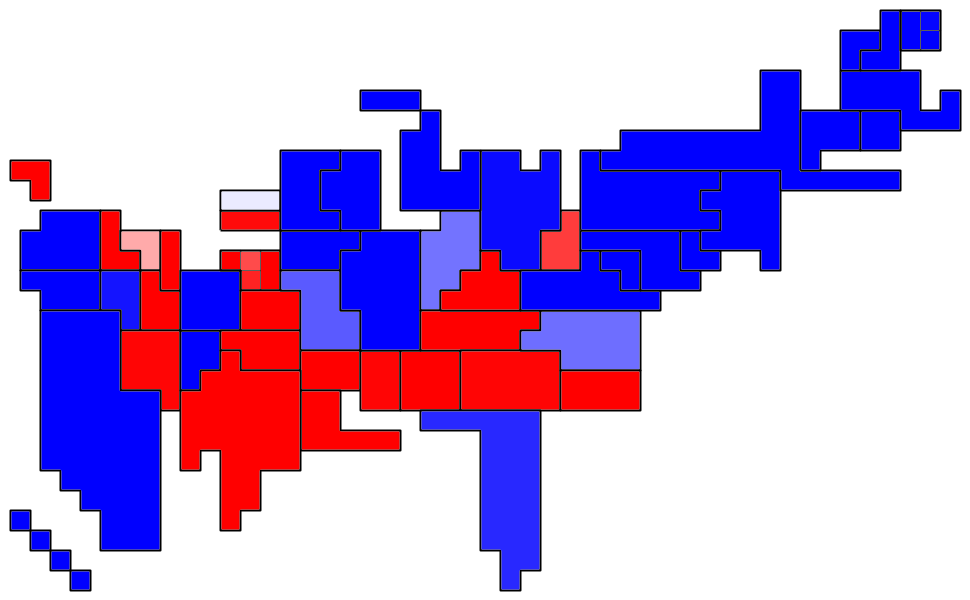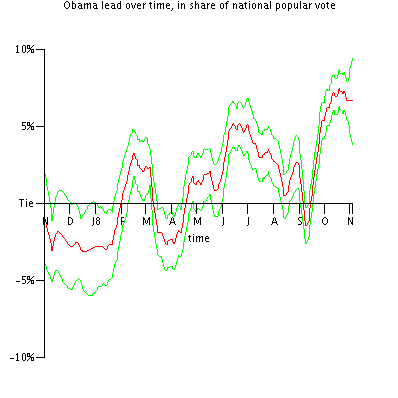I know that I commented on this several weeks ago (and during the 2004 campaign, when conventional wisdom said that the Electoral College favored Bush), but it bears repeating: The Electoral College favors Obama.

The above chart shows the relation between popular vote for Obama (on the X-axis) and probability of victory for Obama in the Electoral College (on the Y-axis). Clearly, the existence of the Electoral College favors Obama. When the popular vote is split evenly, Obama wins about 60% of simulations, and even when he loses the popular vote by a couple tenths of a percent he still wins about half of simulations.
It is well known that the Electoral College overweights small states, which Republicans tend to win. The states with 3-5 votes are: AK, DE, DC, HI, ID, ME, MT, NE, NV, NH, NM, ND, RI, SD, UT, VT, WV, WY. Of these, 39 votes are clearly Republican in an even election (AK, ID, MT, NE, NV, ND, SD, UT, WV, WY), 21 votes are clearly Democratic in an even election (DE, DE, HI, ME, RI, VT), and 9 votes are unclear (NH and NM). This is a structural advantage in the Electoral College for Republicans.
However, the Republicans essentially squander this structural advantage by winning too big in their safe states. Republicans tended to win their safe states by 10-50 points, while Democrats tended to win their safe states by 10-25 points. The one outlier is DC, but in 2004 Republicans wasted far more popular votes per electoral vote in UT than Democrats did in DC.
Democrats were also relatively spare in their winning margins in large safe states too: Republicans wasted 50000 popular votes per electoral vote to win TX, while Democrats wasted only 30000 popular votes per electoral vote to win CA and NY. In fact, I'd say that the key to Democrats' advantage in the Electoral College is their ability to count on winning CA without a very large margin there.
This waste of popular votes is hard to quantify precisely, but I'd say that in a very close election Republicans would tend to waste about 2-3 million popular votes more than Democrats. This is enough to negate the Republicans' structural advantage, plus a little extra.



